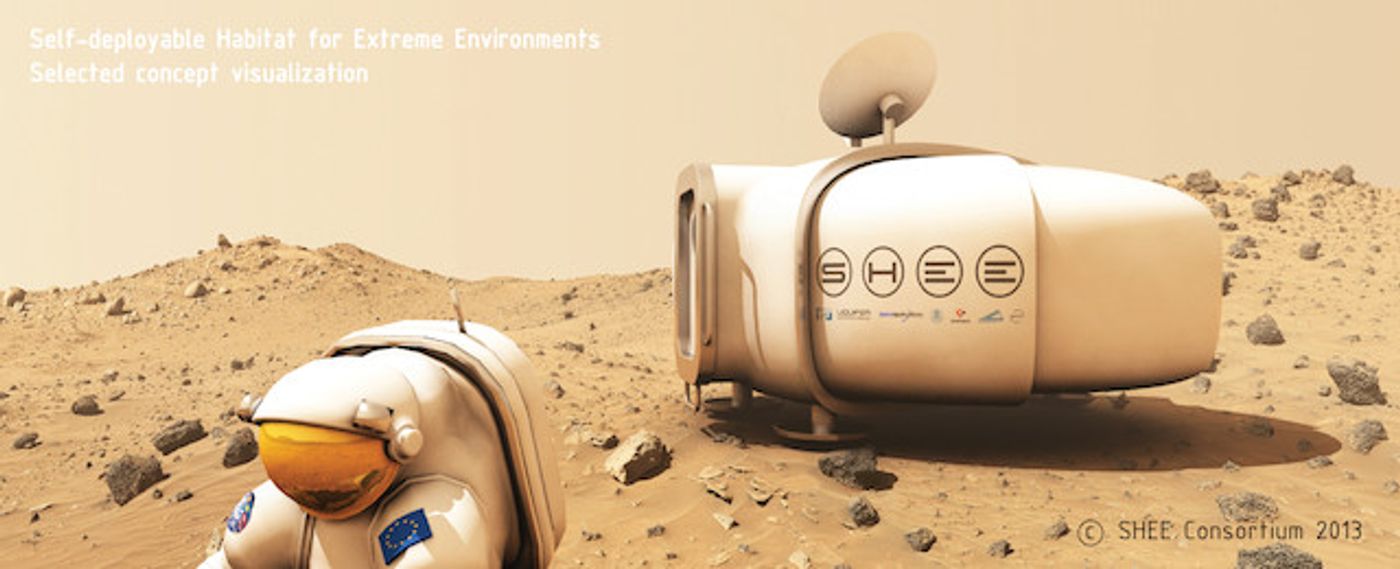Astronauts setting up a colony on the moon, or Mars, or some other planetary body will have a lot of tasks to perform. A European design consortium has developed a new kind of habitat called the Self-deployable Habitat for Extreme Environments (or SHEE). If the project works, then building their home away from home will be one task astronauts will not have to do. If all goes according to plan SHEE will be able to deploy and assemble a human habitat autonomously.

SHEE is the brain child of architect Ondrej Doule, Doule an assistant professor at the Florida Institute of Technology's Human-Centered Design Institute in Melbourne, Florida. He gave a presentation on his idea to the 2015 meeting American Institute of Aeronautics and Astronautics' (AIAA) at the end of last month. The premise behind the SHEE project is that humans doing construction on the surface of Mars or the moon would be extremely risky, complex, and costly. Therefore, when building human habitats and other facilities in these environments, it is only logical to use autonomous construction methods whenever possible.
[##video##]
When deployed, the SHEE habitat is a round structure. Some parts of it are rigid, some are inflatable, and some are robotic. The current design has five major functional areas: entrance ports, work areas, a kitchen, a toilet, and private crew quarters. The interior of the habitat can be custom-furnished and outfitted for different environments and missions, according to its developers.
The SHEE project has received grants totaling 2.3 million euros (roughly 2.6 million dollars) from the European Union's Seventh Framework Program for research, technological development and demonstration. "The lab tests are ongoing," Doule reports, "As with every prototype, there are issues that have to be addressed after first uses and transport, and also continuous integration that started in Estonia, so we are optimizing the system instantly.”
When the system is ready, Doule intends to deploy the SHEE at the International Space University in Strasbourg, France to perform "no-humans-in-the-loop tests and operations”. The main purpose of these tests will be to verify that the SHEE can deploy itself and operate for up to 14 days in an extreme environment. "After that,” says Doule, “we will be developing procedural instructions … a user manual to ensure maximum safety and system lifetime.”
The next phase will be testing in an off-earth analog. “The analog environment is located in Spain,” says Doule, “where the SHEE should serve as a base for human-robotic interaction tests. This is the place where the SHEE gets dirty for the first time, and we will discover its capacity to work in dusty environments with its inflatable seals.”
According to Doule, the biggest challenges ahead involve the ability of the structure to stand up to extreme environments, and creating folding mechanisms for SHEE that aren’t prohibitively expensive. "That's yet to be discovered," he said.
Double says that SHEE could be used not only off-world, but also here on Earth. Scientists, explorers and researchers, for example, could use SHEE as a base in extreme environments. Another possible use could be when housing is needed after a disaster of some sort.
Source:
Space.com









